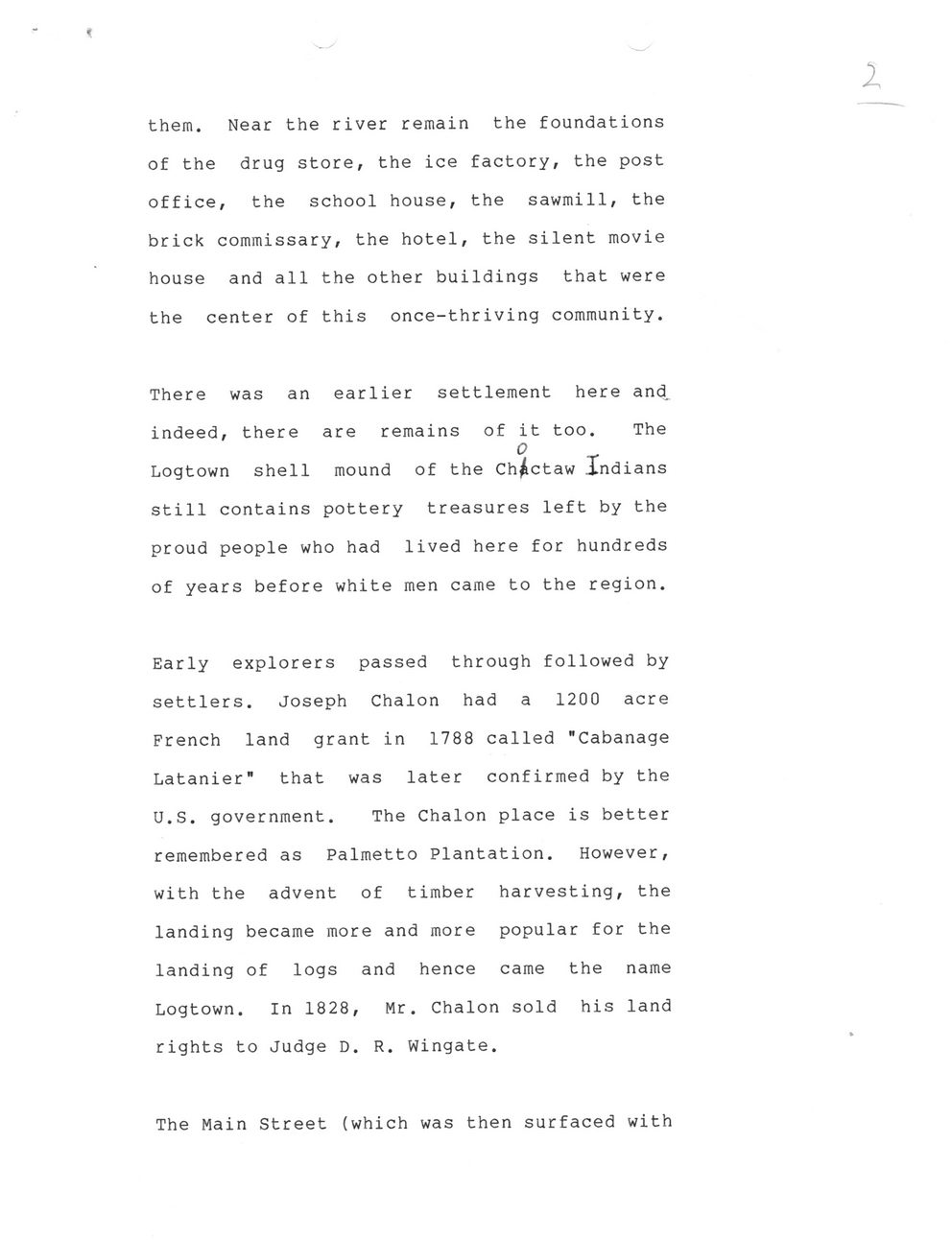This text was obtained via automated optical character recognition.
It has not been edited and may therefore contain several errors.
them. Near the river remain the foundations of the drug store, the ice factory, the post office, the school house, the sawmill, the brick commissary, the hotel, the silent movie house and all the other buildings that were the center of this once-thriving community. There was an earlier settlement here and. indeed, there are remains of it too. The Logtown shell mound of the Choctaw Xndians still contains pottery treasures left by the proud people who had lived here for hundreds of years before white men came to the region. Early explorers passed through followed by settlers. Joseph Chalon had a 1200 acre French land grant in 1788 called "Cabanage Latanier" that was later confirmed by the U.S. government. The Chalon place is better remembered as Palmetto Plantation. However, with the advent of timber harvesting, the landing became more and more popular for the landing of logs and hence came the name Logtown. In 1828, Mr. Chalon sold his land rights to Judge D. R. Wingate. The Main Street (which was then surfaced with

Logtown Logtown Revisited - by Charles H Gray (2)